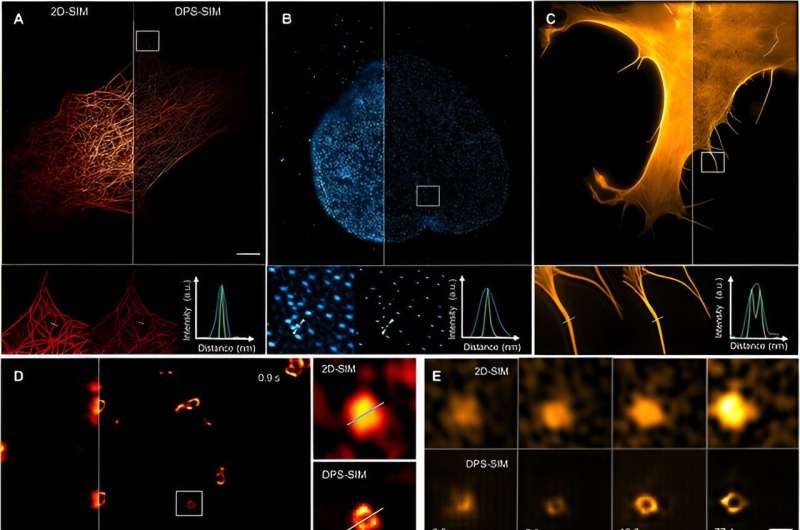This article has been reviewed according to Science X's editorial process and policies. Editors have highlighted the following attributes while ensuring the content's credibility:
fact-checked
trusted source
proofread
New physics-informed neural network for universal and high-fidelity resolution enhancement in fluorescence microscopy

To address the limitations of current computational super-resolution microscopy, a team of researchers at Zhejiang University has introduced a novel deep-physics-informed sparsity framework that significantly enhances structural fidelity and universality.
This innovative method integrates physical imaging models, prior knowledge, a back-end optimization algorithm and deep learning. It can enhance the physical resolution by at least 1.67 times across diverse imaging modalities without requiring additional training or parameter adjustments.
The research was published Feb. 26 in Intelligent Computing.
This development is particularly significant for the biomedical research community, where high-resolution imaging is crucial for understanding complex biological structures and processes. The deep-physics-informed sparsity framework not only extends the spatial resolution of structured illumination microscopy but also ensures high fidelity, outperforming existing methods.
Experimental results showed that the new method can resolve finer details, such as nanoscale line pairs and adjacent fluorescent beads, that conventional methods cannot distinguish.
This advancement allows for clearer imaging of complex biological samples, such as microtubules, nuclear pore complexes and clathrin-coated pits, providing unprecedented insight into cellular structures and dynamics.
The broad applicability of the framework to different imaging modalities without additional training further underscores its potential to revolutionize microscopy, enabling more detailed and accurate studies in various scientific fields.
Fluorescence image super-resolution is inherently an ill-posed problem that can be mathematically formulated as minimizing the difference between the observed low-resolution image and the convolution operation of the point spread function and the super-resolution image.
Traditional approaches have limitations related to structural dependency, parameter tuning and the need for paired training data. Sparse deconvolution relies on sparsity and continuity priors but is highly dependent on specific biological structures and parameter tuning.
Mean shift super-resolution, while compressing the point spread function effectively, often results in negative pixel values and information loss during iterations, especially with complex structures.
Supervised deep learning methods require carefully paired training data and are limited by the availability of ground truth images, making them less versatile across different sample types and modalities.
The new approach uses an unsupervised neural network integrated with fluorescence microscopy priors within the deep-physics-informed sparsity framework to enhance resolution while preserving structural fidelity. It utilizes a physics-informed objective function that incorporates the structure similarity index measure, an L1 norm and a Hessian matrix for sparsity and continuity constraints.
By balancing these constraints with specific weights, the framework optimizes the super-resolution outputs, ensuring high structural integrity and avoiding possible gridding artifacts.
This setup is complemented by a modified U-NET architecture incorporating an error-feedback unit, which addresses the loss of feature map information typically encountered in conventional U-NETs. The framework's dual-stage architecture, including denoising and deep-physics-informed sparsity processes, further refines the super-resolution results, making it applicable across various imaging modalities.
The training of the network involved a two-step transfer strategy using specific datasets to enhance the resolution and structural fidelity, thereby ensuring broad applicability and high-fidelity reconstruction.
More information: Zitong Ye et al, Universal and High-Fidelity Resolution Extending for Fluorescence Microscopy Using a Single-Training Physics-Informed Sparse Neural Network, Intelligent Computing (2024). DOI: 10.34133/icomputing.0082
Provided by Intelligent Computing




















